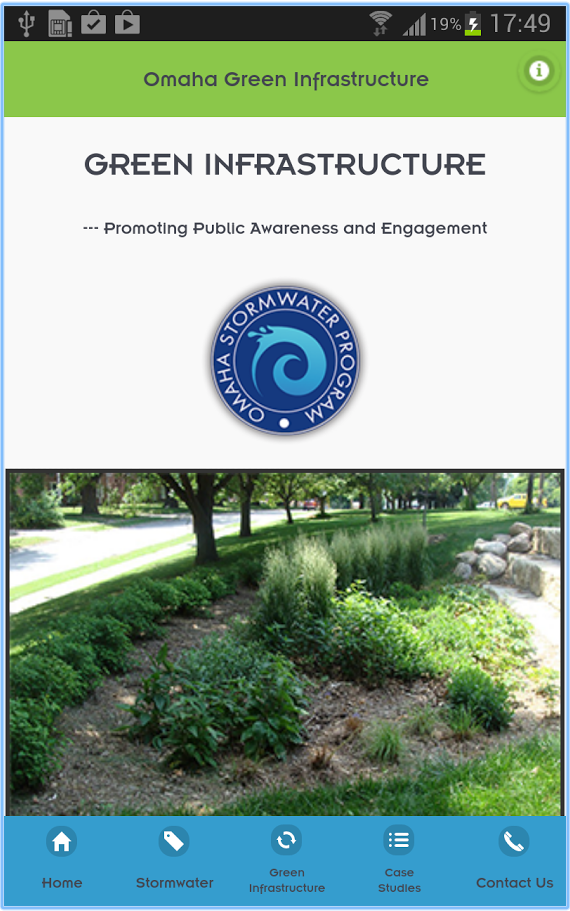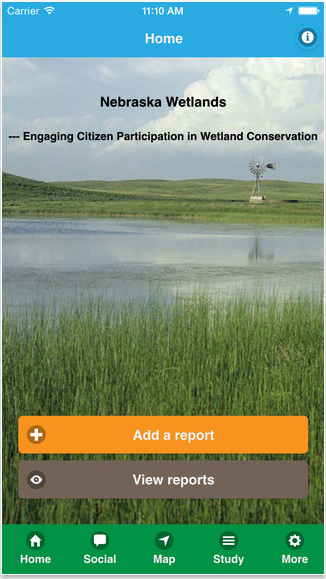
Research by Zhenghong Tang is using smart phones to expand public access to environmental data.
Working with federal, state and local organizations, the associate professor of community and regional planning at the University of Nebraska–Lincoln has created a series of apps that drill into and organize expansive, online scientific databases. The apps, which include Nebraska Wetlands, the U.S. Green Infrastructure Reporter, the Omaha Green Infrastructure, and a to-be-released reporter focused on underground water, present environmental data in an easily accessible and readily understandable format, promoting public awareness and engagement in environmental issues.
“All of this scientific data is available already online to anyone, but it is not presented in a way that is easy to understand,” Tang said. “Through these educational apps, our goal is to make the data accessible and usable for the average citizen.”
The apps also feature a social component, allowing users to become citizen scientists and participate in data collection. For instance, the Nebraska Wetlands app includes an option for users to report current wetland conditions through writing, photographs and videos.
“Providing access to the government databases is important, but it is equally important to provide a real-time reporting system for citizens,” Tang said. “By giving that option, citizens can actively engage in science and contribute to environmental management.
The information they send also provides a real-time report on conditions, something that the government databases cannot always provide.”
The app projects were developed with faculty and students in UNL’s Department of Computer Science and Engineering. The team included Tang, Hongfeng Yu, assistant professor; and students Yanfu Zhou and Jieting Wu.
Partners and funding provided for the apps and related web resources include:
Nebraska Wetlands — Nebraska Game and Parks Administration, Environmental Protection Agency, $133,697, available via iTunes here and Google Play here;
Omaha Green Infrastructure and U.S. Green Infrastructure Reporter — City of Omaha, Environmental Protection Agency, $59,220, available via iTunes here and Google Play here; and
Integrated Network of Scientific Information and GeoHydrologic Tools — (currently in development), Nebraska Department of Natural Resources, $89,013.
“We’re part of a pioneering group of researchers redefining the communication system for environmental issues and data,” Tang said. “We are in the digital age of communication and mobile devices have become the first communication channel. By integrating these technologies with the online data resources, we’re able to provide the necessary information to citizens in ways that are friendlier, faster and more efficient.”









